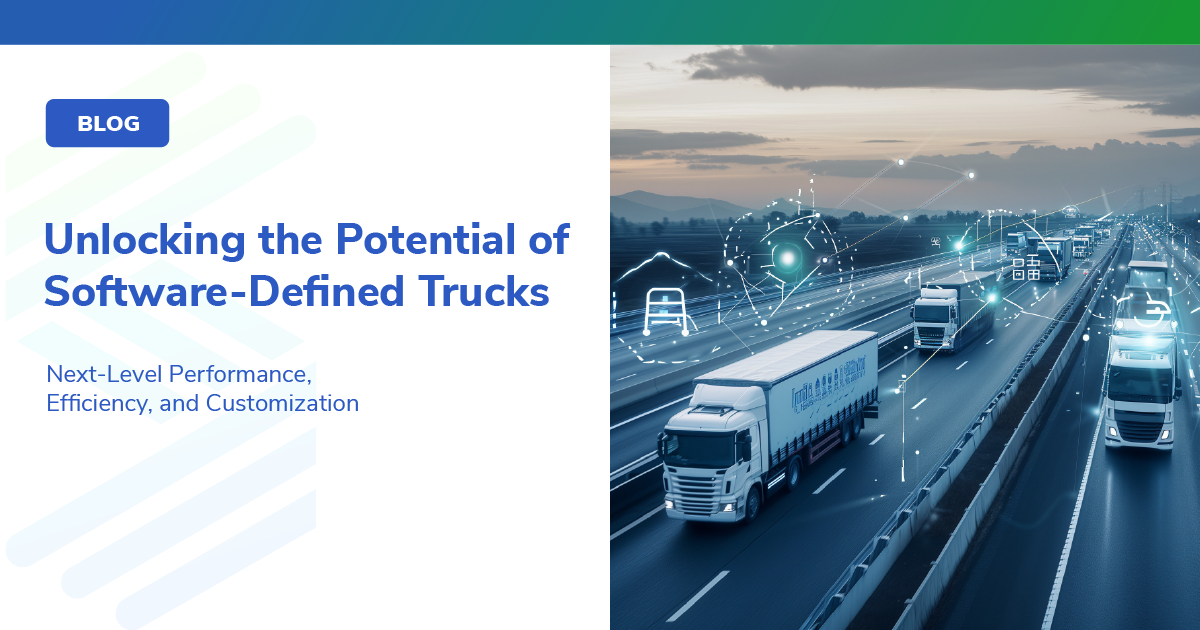
/
August 14, 2023
/
#
Min Read
Foundational Requirements for the Intelligent Connected Vehicle
The Rise of Intelligent Connected Vehicles
Connectivity has come a long way since the invention of the cell phone and the internet. From hot tubs to doorbells, climate systems, and refrigerators, almost every device that contains electronics has the potential to become connected. But what distinguishes connected devices to full intelligent connectivity is key to maximizing the full value that comes from that connection throughout the product lifecycle.
The automotive industry’s shift to a connected vehicle comes with a multitude of benefits including personalized features, enhanced safety, and improved functionality. Additionally, the experience of the end user becomes more and more important in the design of the vehicle. To keep up with this accelerating rate of change and feature development, automakers need to implement supportive technologies and solutions, such as over-the-air (OTA) technology and powerful telematics units.
The Importance of OTA
OTA updates not only expand the realm of what is possible for automakers in regards to enhancing the customer experience; they are also instrumental in maintaining the safety, functionality, and security of the next generation of vehicles. With OTA, manufacturers can communicate directly with each vehicle in their fleet and perform feature upgrades and enhancements via the telematics unit.
While some manufacturers have very limited OTA solutions, many are ill-equipped to support more robust updates, commands, and diagnostics. As such, most software faults and glitches still require a trip to the dealer to be diagnosed and mediated. In other words, OEMs have a limited view of what is happening in their vehicles and a limited ability to fix issues that arise.
However, this doesn’t have to be the case. Sibros’ Deep Connected Platform is an out-of-the-box solution that enables safety-critical updates to all electronic control units (ECUs) and deep vehicle diagnostics to proactively identify faults during every part of the vehicle lifecycle – from design to decommissioning. This approach provides automakers with a single source of truth and holistic visibility of vehicle health and functionality, as well as a means of maintaining and enhancing their products once they’ve left the lot.
Importance of Powerful Telematics Units for OTA Updates
The telematics control unit (TCU) acts as a gateway or bridge between the cloud and the different ECUs or subsystems that exist within the vehicle. It receives OTA updates, which are transmitted from the cloud through wireless networks, and then executes distribution and installation. The telematics unit also provides access to in-vehicle data, which can be logged to the cloud and used for troubleshooting and advanced data analytics.
To ensure the connection between the vehicle and the cloud server is secure, TCUs must be equipped with several key features:
- Long-Term Evolution (LTE) connectivity to ensure a stable connection to the cloud and retrieve firmware update packages from the server.
- Multiple CAN ports to access vehicle ECUs
- Ability to store packages for efficient updates and data collection
- Security including the ability to sign and certify images and updates
- A powerful applications processor to handle processing
Having a powerful Linux telematics unit enables automakers to harness the value of connected vehicle data with greater intelligence and improved analytics. It also provides a base for OEMs to build and integrate custom applications that work seamlessly with existing vehicle hardware. Finally, Linux TCUs ensure that data integrity is maintained by providing a secure execution environment and preventing unauthorized device access.
The Future of Connected Vehicles
If there is one thing we know for certain in the automotive industry, it’s that technology is constantly changing and evolving. Without the right solutions in place, many vehicle features of today will be out of date in five years and customers will always want the latest and greatest. The combination of a robust telematics unit and dependable OTA software is crucial to an OEM’s future success.
This dynamic combination of hardware and software provides automakers with the data required to improve vehicles and the means of executing those improvements. Together, Sibros’ Deep Connected Platform and iWave’s Telematics Solutions:
- Ensure functionality and reliability throughout the vehicle life cycle
- Mitigate and even prevent software-related recalls
- Improve the customer experience
- Enable faster time to market
- Update vehicles with the latest features and software versions
- Diagnose vehicle health issues and faults
- Support maintenance and calibration efforts for safety-critical systems such as ADAS and AI-based features
Although the true power of connectivity will only be seen with the industry-wide implementation of software-defined vehicles (SDVs), OEMs do not need to fully convert to high-performance compute platforms and advanced electrical architectures to reap the benefits of connected vehicles. OTA and TCUs are the building blocks OEMs need to build better, safer, more efficient, and more reliable connected vehicles. To learn more about iWave and Sibros’ solutions contact us today.











